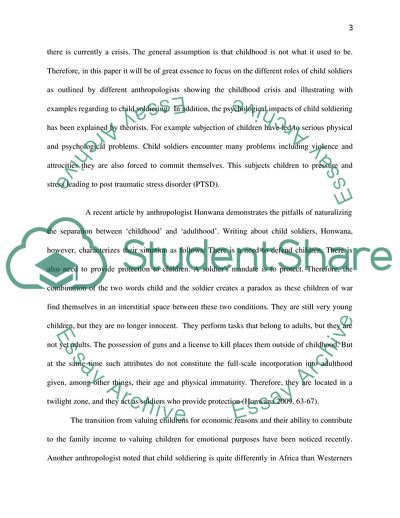Cite this document
(Children Roles as Child Soldiers Literature review Example | Topics and Well Written Essays - 2250 words - 1, n.d.)
Children Roles as Child Soldiers Literature review Example | Topics and Well Written Essays - 2250 words - 1. https://studentshare.org/anthropology/1848209-childrens-roles-as-child-soldiers
Children Roles as Child Soldiers Literature review Example | Topics and Well Written Essays - 2250 words - 1. https://studentshare.org/anthropology/1848209-childrens-roles-as-child-soldiers
(Children Roles As Child Soldiers Literature Review Example | Topics and Well Written Essays - 2250 Words - 1)
Children Roles As Child Soldiers Literature Review Example | Topics and Well Written Essays - 2250 Words - 1. https://studentshare.org/anthropology/1848209-childrens-roles-as-child-soldiers.
Children Roles As Child Soldiers Literature Review Example | Topics and Well Written Essays - 2250 Words - 1. https://studentshare.org/anthropology/1848209-childrens-roles-as-child-soldiers.
“Children Roles As Child Soldiers Literature Review Example | Topics and Well Written Essays - 2250 Words - 1”. https://studentshare.org/anthropology/1848209-childrens-roles-as-child-soldiers.


